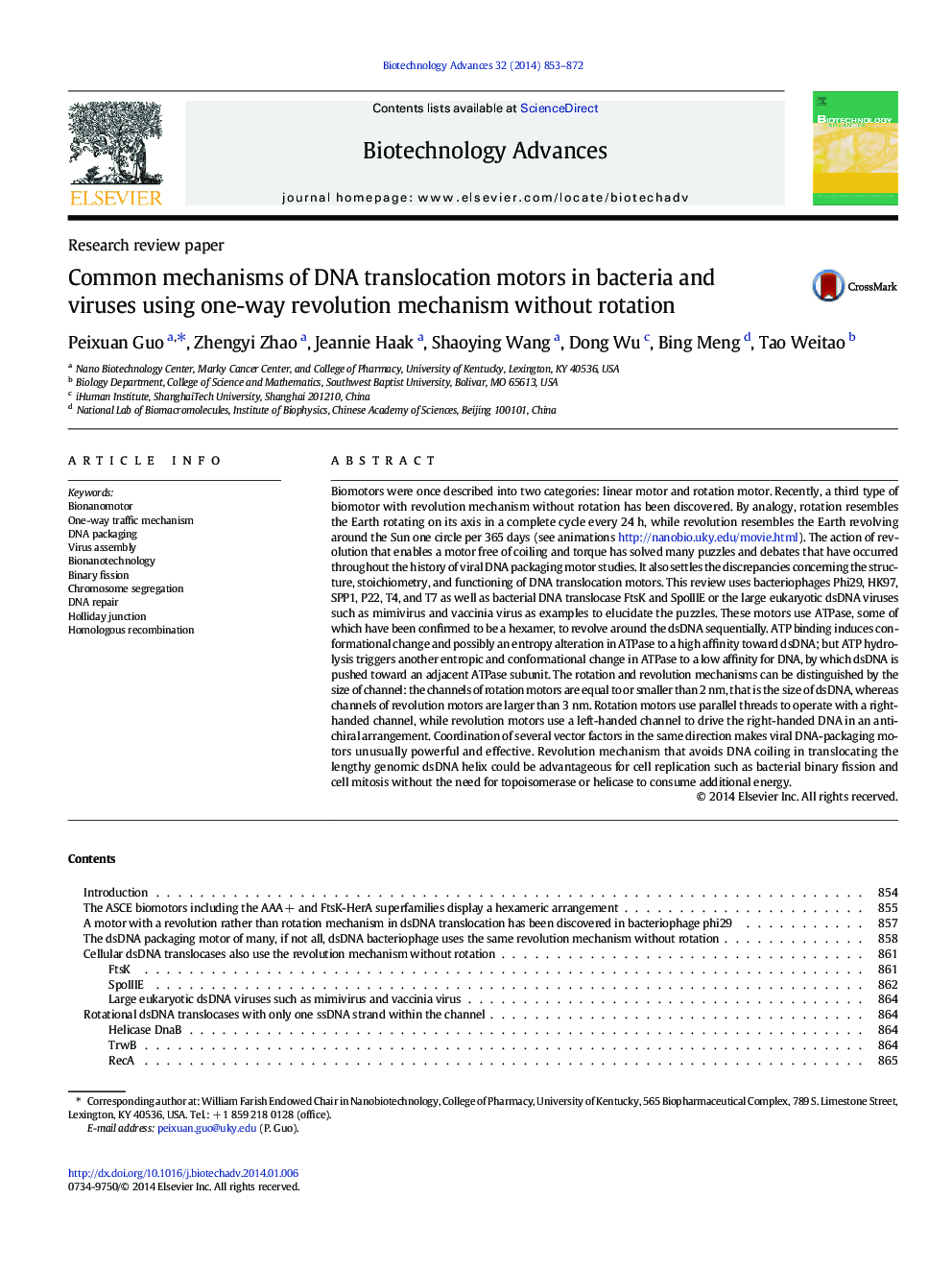| Article ID | Journal | Published Year | Pages | File Type |
|---|---|---|---|---|
| 14279 | Biotechnology Advances | 2014 | 20 Pages |
Biomotors were once described into two categories: linear motor and rotation motor. Recently, a third type of biomotor with revolution mechanism without rotation has been discovered. By analogy, rotation resembles the Earth rotating on its axis in a complete cycle every 24 h, while revolution resembles the Earth revolving around the Sun one circle per 365 days (see animations http://nanobio.uky.edu/movie.html). The action of revolution that enables a motor free of coiling and torque has solved many puzzles and debates that have occurred throughout the history of viral DNA packaging motor studies. It also settles the discrepancies concerning the structure, stoichiometry, and functioning of DNA translocation motors. This review uses bacteriophages Phi29, HK97, SPP1, P22, T4, and T7 as well as bacterial DNA translocase FtsK and SpoIIIE or the large eukaryotic dsDNA viruses such as mimivirus and vaccinia virus as examples to elucidate the puzzles. These motors use ATPase, some of which have been confirmed to be a hexamer, to revolve around the dsDNA sequentially. ATP binding induces conformational change and possibly an entropy alteration in ATPase to a high affinity toward dsDNA; but ATP hydrolysis triggers another entropic and conformational change in ATPase to a low affinity for DNA, by which dsDNA is pushed toward an adjacent ATPase subunit. The rotation and revolution mechanisms can be distinguished by the size of channel: the channels of rotation motors are equal to or smaller than 2 nm, that is the size of dsDNA, whereas channels of revolution motors are larger than 3 nm. Rotation motors use parallel threads to operate with a right-handed channel, while revolution motors use a left-handed channel to drive the right-handed DNA in an anti-chiral arrangement. Coordination of several vector factors in the same direction makes viral DNA-packaging motors unusually powerful and effective. Revolution mechanism that avoids DNA coiling in translocating the lengthy genomic dsDNA helix could be advantageous for cell replication such as bacterial binary fission and cell mitosis without the need for topoisomerase or helicase to consume additional energy.
